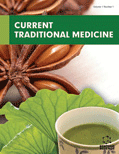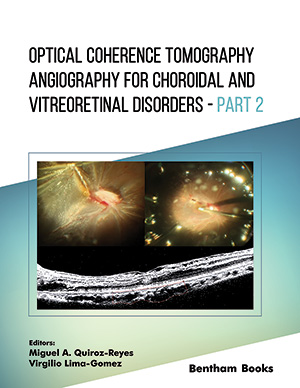Abstract
Background: Limnophila rugosa (Scrophulariaceae) is an aquatic and perennial herb that finds its natural habitats in ponds, rivers, lakes as well as marshy lands of India. The traditional practitioners of Bolangir and Bargarh District of Odisha use this plant as a source of Bhringaraj. Therapeutically, it is used as diuretic, stomachic, digestive tonic and as a hair perfume, treatment of elephantiasis, diarrhoea, dysentery, dyspepsia and urinary burning.
Objective: The present study was focused to provide the information regarding its traditional uses, compounds identified from different parts and essential oil; and the pharmacological activities of the reported compounds, which will bring the scope for future research.
Methods: Extensive literature survey was carried out up to 2021 in Google scholar, Web of Science, Scopus, PubMed, Science Direct, Springer, Taylor and Francis using keywords pharmacognostical, phytochemical and pharmacological aspect of L. rugosa.
Results: The study revealed diverse chemical compounds; flavonoids, terpenoids, amino acids, alcohol, phenol, aldehyde, ketone, carboxylic acid and ether. 5,7-Dihydroxy-6,8,4'- trimethoxyflavone (Nevadensin), 5-Hydroxy-6,7,4'-trimethoxyflavone (Salvigenin), Betulin, betulinic acid, caryophyllene, cis-anethole, methylchavicol were found as major compounds. Pharmacological activities such as antimicrobial, anti-inflammatory, diuretic and hypotensive were reported. The identified compounds exhibited several pharmacological activities, including antibacterial, antimicrobial, antifungal, anxiolytic, anti-inflammatory, analgesic, antioxidant, anti-tubercular, anti-tumour, anti-cancer, immunomodulatory, hepatoprotective, antiulcer, antidiabetic, antinociceptive, antimalarial, antiviral, anti-hyperlipidaemic, anti-HIV, insecticidal, herbicidal, antifeedant, anti-coagulant, gastro-protective, antihelmintic.
Conclusion: As, most of the compounds exhibited significant antimicrobial, antibacterial and antifungal activity so, a novel dosage form can be prepared from the essential oil of L. rugosa for antimicrobial activity.
Keywords: Limnophila rugosa, essential oil, pharmacognostical, phytochemistry, antimicrobial, pharmacological activities.
[http://dx.doi.org/10.2174/1874848100801010034]
[http://dx.doi.org/10.14499/indonesianjpharm30iss3pp187]
[http://dx.doi.org/10.1071/BT9850367]
[http://dx.doi.org/10.1080/10412905.2014.922510]
[http://dx.doi.org/10.1080/0972060X.2011.10643947]
[http://dx.doi.org/10.1007/978-0-387-70638-2]
[http://dx.doi.org/10.4103/0974-8520.146259] [PMID: 25558169]
[http://dx.doi.org/10.1016/j.jep.2020.113630] [PMID: 33246118]
[http://dx.doi.org/10.1016/j.anaerobe.2020.102194] [PMID: 32205191]
[http://dx.doi.org/10.3109/13880209109082868]
[http://dx.doi.org/10.2174/1871520617666171012124820] [PMID: 29022515]
[http://dx.doi.org/10.1134/S1068162019050030]
[http://dx.doi.org/10.15406/oajtmr.2017.01.00012]
[http://dx.doi.org/10.4081/xeno.2017.6475] [PMID: 30701057]
[http://dx.doi.org/10.4236/pp.2012.32018]
[http://dx.doi.org/10.4196/kjpp.2018.22.3.235] [PMID: 29719446]
[http://dx.doi.org/10.1016/j.febslet.2015.11.002] [PMID: 26555191]
[http://dx.doi.org/10.1007/s00726-015-1987-0] [PMID: 25900811]
[http://dx.doi.org/10.1111/lam.13195] [PMID: 31260122]
[http://dx.doi.org/10.1016/j.bbamem.2007.06.020] [PMID: 17655823]
[http://dx.doi.org/10.1016/j.jcis.2015.04.031] [PMID: 25935286]
[http://dx.doi.org/10.1016/0014-5793(96)00381-X] [PMID: 8635601]
[PMID: 8485327]
[PMID: 18156782]
[http://dx.doi.org/10.1016/j.foodchem.2010.02.071]
[http://dx.doi.org/10.5650/jos.ess16196] [PMID: 28794307]
[PMID: 24381607]
[http://dx.doi.org/10.1177/1934578X1100600223] [PMID: 21425686]
[http://dx.doi.org/10.1371/journal.pone.0136190] [PMID: 26352256]
[http://dx.doi.org/10.1186/s12917-019-1914-9] [PMID: 31118023]
[http://dx.doi.org/10.1016/S0022-474X(96)00021-5]
[http://dx.doi.org/10.1016/j.molstruc.2020.128844]
[http://dx.doi.org/10.1016/S2221-1691(12)60357-8]
[http://dx.doi.org/10.1128/AEM.02482-19] [PMID: 31811038]
[http://dx.doi.org/10.5073/jka.2010.425.316]
[http://dx.doi.org/10.3390/molecules24173203] [PMID: 31484421]
[http://dx.doi.org/10.1016/j.bjp.2017.02.004]
[http://dx.doi.org/10.3390/molecules200711808] [PMID: 26132906]
[http://dx.doi.org/10.21931/RB/2019.04.03.5]
[http://dx.doi.org/10.1177/1934578X1100600940] [PMID: 21941920]
[http://dx.doi.org/10.1080/14786419.2015.1010162] [PMID: 25687213]
[http://dx.doi.org/10.1177/1934578X1000500906] [PMID: 20922992]
[http://dx.doi.org/10.4314/bcse.v21i2.21204]
[http://dx.doi.org/10.14748/ssp.v2i2.1141]
[http://dx.doi.org/10.1016/j.phymed.2013.09.001] [PMID: 24176844]
[http://dx.doi.org/10.3390/molecules17066449] [PMID: 22643355]
[http://dx.doi.org/10.1016/j.jep.2013.02.026] [PMID: 23466248]
[http://dx.doi.org/10.1186/s40813-019-0139-4] [PMID: 31890256]
[http://dx.doi.org/10.1080/00071669708417941] [PMID: 9088614]
[http://dx.doi.org/10.22382/wfs-2020-039]
[http://dx.doi.org/10.1051/parasite/1992674126] [PMID: 1294019]
[http://dx.doi.org/10.1002/ptr.1088] [PMID: 12601674]
[http://dx.doi.org/10.5897/JMPR2020.6905]
[http://dx.doi.org/10.4315/0362-028X-73.5.888] [PMID: 20501040]
[http://dx.doi.org/10.1177/1934578X0800300727]
[http://dx.doi.org/10.5935/1806-6690.20150023]
[http://dx.doi.org/10.1016/j.indcrop.2014.05.006]
[http://dx.doi.org/10.1016/j.ijantimicag.2016.08.017] [PMID: 27742206]
[http://dx.doi.org/10.1177/1934578X1501000133] [PMID: 25920237]
[http://dx.doi.org/10.1590/S0102-695X2011005000157]
[http://dx.doi.org/10.1111/fcp.12166] [PMID: 26791997]
[http://dx.doi.org/10.1007/s12088-016-0609-1] [PMID: 27784938]
[http://dx.doi.org/10.3390/ma10080947] [PMID: 28809799]
[http://dx.doi.org/10.1016/S0378-8741(98)00229-3] [PMID: 10433476]
[http://dx.doi.org/10.1007/s10529-017-2293-6] [PMID: 28150076]
[http://dx.doi.org/10.1016/j.fitote.2006.09.016] [PMID: 17107759]
[http://dx.doi.org/10.1111/1748-5967.12336]
[http://dx.doi.org/10.3906/biy-1309-55]
[http://dx.doi.org/10.3390/molecules17066305] [PMID: 22634841]
[http://dx.doi.org/10.1021/np400828x] [PMID: 24455984]
[http://dx.doi.org/10.1080/0972060X.2009.10643718]































